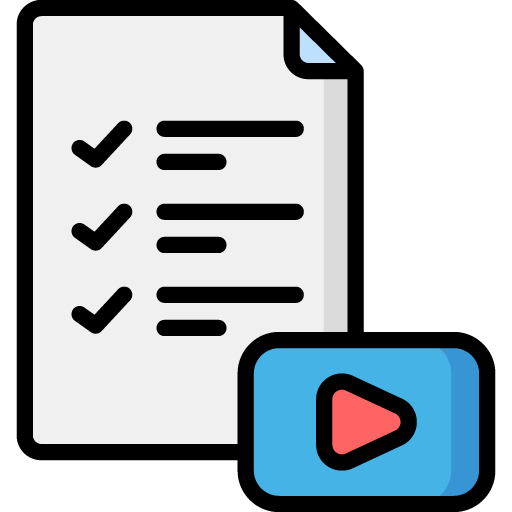Techniques for Identifying and Understanding Your Target Audience on YouTube
Identifying Your Target Audience:
Techniques for Identifying and Understanding Your Target Audience on YouTube
Creating content on YouTube is more than just hitting “record” and uploading a video. To grow a successful channel, you need to reach the right audience—people who are genuinely interested in your content, engage with your videos, and become loyal subscribers.
But how do you figure out who your target audience is? Many creators make the mistake of assuming their content is for “everyone,” but in reality, successful channels are built on a well-defined audience. Understanding who is watching your videos, what they care about, and how they consume content allows you to create videos that truly resonate and drive engagement.
In this guide, we’ll break down proven techniques for identifying and understanding your target audience on YouTube. Whether you’re starting fresh or looking to refine your existing strategy, these insights will help you create content that attracts the right viewers and grows your channel.
Why Identifying Your Target Audience Matters
If you try to appeal to everyone, you’ll end up attracting no one. A well-defined audience ensures that your content is focused, relevant, and valuable to the people who matter most.
Key Benefits of Knowing Your Audience:
- Increased Engagement: Viewers are more likely to like, comment, and share videos that resonate with them.
- Higher Watch Time & Retention: A targeted audience stays engaged, boosting your YouTube rankings.
- Better YouTube SEO Performance: Videos that attract the right audience perform well in search results and recommendations.
- Stronger Community Building: Understanding your viewers helps foster loyal subscribers and brand advocates.
A clear target audience is the foundation for long-term YouTube success.
Defining Your Ideal Viewer Profile
To build an effective audience strategy, you need to define your ideal viewer by considering key attributes:
Demographics:
- Age group (Gen Z, Millennials, Gen X, etc.)
- Gender distribution
- Location and language preferences
Psychographics:
- Interests and hobbies (tech, fitness, fashion, gaming, etc.)
- Pain points and challenges (What problems do they need solutions for?)
- Values and beliefs (Sustainability, career growth, self-improvement, etc.)
Viewing Behavior:
- Preferred content format (shorts, long-form, live streams)
- Time of day they are most active
- Frequency of YouTube usage
By defining these characteristics, you can tailor your content to fit their needs, making it more appealing and effective.
Using YouTube Analytics to Gather Audience Data
YouTube Analytics provides invaluable insights into who is watching your videos and how they interact with your content.
Key YouTube Analytics Metrics:
- Audience Demographics: Age, gender, geographic location
- Watch Time: How long viewers are staying on your videos
- Audience Retention: Where viewers drop off in your video
- Click-Through Rate (CTR): How often people click on your video when it appears in search results or recommendations
- Traffic Sources: Where your views are coming from (YouTube search, suggested videos, external websites, etc.)
How to Access YouTube Analytics:
- Go to YouTube Studio
- Click on “Analytics” from the left menu
- Navigate to the “Audience” tab to view demographic insights
- Use the “Reach” tab to analyze traffic sources and impressions
By regularly monitoring these insights, you can refine your content strategy to align with your actual audience.
Conducting Keyword and Search Intent Research
Understanding what people search for on YouTube can help you create highly relevant content that attracts the right audience.
Techniques for Finding Keywords & Search Trends:
- YouTube Search Autocomplete: Type keywords into the YouTube search bar and note the auto-suggestions.
- TubeBuddy & VidIQ: These tools analyze trending keywords and search volume.
- Google Trends: Helps track the popularity of specific topics over time.
- Competitor Video Titles: Look at the most-viewed videos in your niche to identify recurring keywords.
By targeting the right keywords, you can increase visibility and attract viewers who are genuinely interested in your content.
Analyzing Competitors’ Audiences
Your competitors have already built an audience—learn from them to understand your potential viewers.
Steps to Analyze Competitor Audiences:
- Identify Successful Competitors: Find YouTube channels with similar content.
- Review Their Top-Performing Videos: Check which topics get the most views and engagement.
- Read Comment Sections: Look at what viewers are saying and what questions they ask.
- Analyze Their Community Engagement: How do they interact with their audience (polls, Q&As, live chats)?
This research can reveal audience interests, pain points, and content preferences, helping you refine your strategy.
Leveraging Social Media Insights
Your audience doesn’t just exist on YouTube—they engage with content across multiple platforms. Social media insights can help you discover more about them.
How to Use Social Media for Audience Research:
- Instagram & Twitter Polls: Ask followers about their YouTube content preferences.
- Facebook Groups & Reddit: See discussions related to your niche.
- TikTok & Instagram Reels Trends: Observe which short-form content gets high engagement.
- LinkedIn (For B2B Content): Analyze professional discussions related to your topic.
Social media can help you understand where your audience is most active and what kind of content resonates with them.
Using Surveys and Polls to Gather Direct Feedback
The best way to understand your audience is to ask them directly!
Methods to Collect Audience Feedback:
- YouTube Community Polls: Ask about topics, video length preferences, and formats.
- Google Forms Surveys: Get detailed insights from subscribers.
- In-Video Questions: Encourage viewers to leave comments with their opinions.
For example, a fitness YouTuber might ask:
“Would you prefer more home workout videos or gym workout tutorials? Vote in the poll!”
Direct audience feedback guides your content strategy in the right direction.
Identifying Trends and Behavioral Patterns
How to Track Audience Trends:
- Seasonal Trends: (e.g., Holiday shopping guides in December, fitness motivation in January)
- Content Format Preferences: (Are people engaging more with YouTube Shorts or long-form content?)
- Peak Viewing Times: (What time do most of your viewers watch?)
Using YouTube Analytics & Google Trends, you can adjust your content strategy to match trending topics and formats.
Identifying and understanding your target audience is one of the most crucial steps in building a successful YouTube channel. By using a combination of data analysis, competitor research, social insights, and direct audience feedback, you can create content that truly resonates with your viewers.
Key Takeaways:
- Define your audience’s demographics, interests, and behaviors.
- Use YouTube Analytics to track engagement and preferences.
- Conduct keyword and competitor research to find content opportunities.
- Leverage social media insights to understand audience behavior.
- Gather direct feedback through polls and surveys.
By applying these techniques, you’ll build a loyal, engaged audience and create content that drives consistent growth on YouTube.Are you ready to refine your YouTube content strategy? Start identifying your target audience today and watch your channel thrive! 🚀







 Edit Your Footage
Edit Your Footage
Leave a Reply